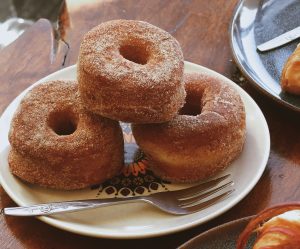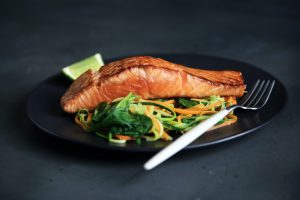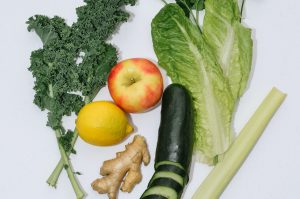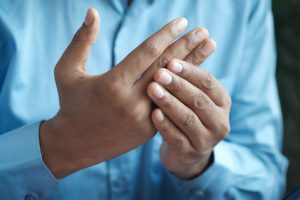Herbal Medicine
3 Tips for Winter Self-Care
 With the shorter days and longer, colder nights of winter upon us, it is in our best interest to follow nature to best support well-being. Of course, to some degree it is relatively impossible for most of us to alter most things about our lifestyle based on the seasons. Modern society does not follow, nor concern itself with the Tao. The Tao does not make money nor promise love, and even if it could we are not learned enough in it to follow with much accuracy. Nevertheless, we can still do what we can when we can, make minor modifications, certain mindful choices whenever possible, as I would be remiss to not share.
With the shorter days and longer, colder nights of winter upon us, it is in our best interest to follow nature to best support well-being. Of course, to some degree it is relatively impossible for most of us to alter most things about our lifestyle based on the seasons. Modern society does not follow, nor concern itself with the Tao. The Tao does not make money nor promise love, and even if it could we are not learned enough in it to follow with much accuracy. Nevertheless, we can still do what we can when we can, make minor modifications, certain mindful choices whenever possible, as I would be remiss to not share.
- Stay warm… but not too warm! While Chinese Medicine is all about warmth, encouraging vasodilation over constriction, if you live in a climate that has the four seasons it does not benefit your “wei qi” (immune system) to never experience the conditions and elements at all. This does not mean go out wearing belly t-shirts, short sleeves, or no socks at the first weather report above 40 degrees. On the contrary, hats and scarves are highly recommended, as is not being overly sedentary or sheltered. A sheltered existence, whether literally or figuratively, creates a weaker shell. For our purposes we might think of our immune system as our shell. Even if just for a commute or walk around the neighborhood, it is important to get outside on most days, bundle up, and not fall too victim to the privilege of modern climate control.
- Sleep earlier. While the recommended bedtime in Summer is 11pm, in Winter it is 10pm. This doesn’t mean get into bed at 10pm, watch a movie until 12, and fall asleep around 12:20. It means to be unconscious at 10:00. For those of us this presents a challenge for, the earlier you can do the better. There is a biomedical belief that for healthy sleep habits, consistency of bedtimes is most important. If one goes to sleep at 1am a few nights out of the week, one should do so every night. From a Chinese Medical perspective, this is a bit like recommending if you eat pizza once a week you should do so daily, so that it is never able to shock your microbiome. Instead, we recommend making the healthiest possible choice as often as possible. Also, don’t eat pizza every week. I love pizza too, but let’s be honest. It’s fast food.
- More (red) meat), less raw food. I know it feels like Chinese Medicine doctors are always trying to get people to eat more red meat and less raw food, but that really is not the case. The summer is a time for both raw foods and red meat in moderation. There can be more days of veganism or pescatarianism in Summer, as excessive beef is too warm for most bodies on hot days. By contrast, Winter is the coldest, most yin time of year. It is the time to protect our bodies’ “yang qi,” or metabolic fire, as we observe in so many other animals as a time to store fat (you can begin your South Beach diet in April). The oppressive cold of yin requires balance in the form of yang-warming ingredients—think steak cooked with garlic, onions, or ginger. If you cannot consume red meat it is advisable to accentuate the warming spices. Please note, this does not mean hot sauce or red pepper, which is a bit to healthy spices what coffee is to much needed rest. It will give a temporary surge of warmth, but in the long run will dry out the healthy stomach fluids, which will make it more difficult to absorb nutrients and generate natural yang inside the body. Spicy food is not “yang,” any more than yelling or shouting is “strong.”
For my part what I can offer for the next few months is more moxibustion, heat lamps, and heated tables when indicated. Burning the mugwort herb on acupuncture points generates healthy warmth and organ fluids in a way that no other modality can, in my opinion. In biomedical terms, it reduces cartilage damage from inflammation by modulating the NF-κB signaling pathway. It also drops pain via the suppression of Cox-2, which is an inductible enzyme that is highly expressed with pain. Recall, one of the oldest Chinese Medicine maxims: Where there is pain there is stagnation. Where there is stagnation there is cold. This is why my office smells like an incense store in winter.
Cinnamon (Donuts?!) for Common Cold

Last week my daughter was sick—it feels almost bi-weekly since starting pre-school, which I understand is relatively par for the course. Sometimes my wife and I both catch it, other times only one of us does, and occasionally we both sort of manage to fight off an apparently diluted version of it for a few days. Fortunately, this time around was the latter.
There is a saying in the west: No cure for the common cold, implying of course that we can take over the counter meds to manage symptoms but there is no actual medication to resolve the virus itself—the best we can do is rest, take care, and let it run its course. This is false. As is the case almost anytime biomedicine claims no cure exists, what it really means is that they have nothing to offer it. Whereas every Chinese Medical text ever written describes countless different viral patterns and presentations and their corresponding prescriptions, complete with the dosage modifications as indicated.
One of the most common herbal formulas given is called Gui Zhi Tang (gway-jer-tong), which contains simply cinnamon branch, paoniae root, ginger, red dates, and licorice. It is often indicated when there is congestion and/or headaches, chills, mild body aches, and mild sweating. If there is no sweating at all and severe body aches, we are more likely to use an ephedra-based formula, as gui zhi tang would be incorrect here.
Cinnamon branch warms the interior of the body and brings healthy fluids and the immunological cellular energy contained within them to the surface of the body. Ginger complements this function, whereas the licorice, dates, and paoniae counterbalance it, regenerating healthy metabolic fluids, preventing the cinnamon and ginger from creating excessive internal dryness and thereby prolonging imperfect health. It’s quite brilliant. Paeoniae has the additional benefit of entering the body’s muscle layer to reduce aches. This is often applicable to chronic pain as well.
Classically it is recommended to drink the formula then immediately eat a bowl of congee rice porridge, get under the covers, and induce a mild sweat to fully and finally resolve the cold. Personally, I have done this in the past with great success. If congee’s not your thing, a bowl of ramen or pho can work just as well—just please no smoothies, yogurt, or salads while sick!
My wife, daughter, and I went to one of the local farms last week, gathering pumpkins and apples for the season, and although refined sugar is a rarity at home, I was compelled to grab some apple cider cinnamon donuts as a seasonal staple. When Peyton came down with her cold I hid some Chinese herbs inside one of the donuts, and almost instinctively she took it over to the couch, sat down, and got under a blanket to indulge.
Surely, the donut did more harm than good, but that doesn’t mean it didn’t do any good at all. In conjunction with the herbs, I spent whatever time I could rubbing and tapping her upper back, over her lungs, a similar premise to using gua sha or cupping techniques at the same location for when people come into the office sick. Some of these techniques might have to be dusted off, as 2023 marks the first in the past few years that people with colds are welcome back, preferably with a mask of course.
As we enter cold and flu season, I hope folks will consider Chinese Medicine, as opposed to taking over the counter symptom suppressants that push the pathogen deeper into the body and potentially create the more notorious pattern, the “unresolved exterior pathogen.” This can be seen in everything from autoimmune to migraines or skin conditions, and often demands the cinnamon branch ingredient as well, though within much more complex formulas, taken over much longer periods of time, and never within a donut.
Gimmick Diets: Strengths & Weaknesses
 It’s not that gimmick diets don’t work. There couldn’t not be science behind them, just as there is in anything intentional in food or nature, anything we put into our bodies. The issue instead, why they get labeled as “gimmick,” is the allopathic, one-size-fits-all paradigm from which they are often recommended.
It’s not that gimmick diets don’t work. There couldn’t not be science behind them, just as there is in anything intentional in food or nature, anything we put into our bodies. The issue instead, why they get labeled as “gimmick,” is the allopathic, one-size-fits-all paradigm from which they are often recommended.
I’m confident any diet of complete abstinence, whether gluten and dairy free, veganism, paleo, keto, or intermittent fasting, can benefit certain people for certain amounts of time; but just as is the case with herbal or western medicine, the only way for them to be truly effective, intelligently prescribed, is by knowing not only their benefits, but their flaws.
For example, when we nourish blood with herbal medicine, we should beware of creating internal dampness and modify accordingly. When we drain dampness we should beware of drying healthy body fluids and modify accordingly. Western medicine does not have this luxury. They cannot modify pharmaceuticals beyond dosage, and even if they could, subjective systemic climate is not a part of their pathology diagnoses.
May people benefit from the vegan diet. By eliminating meat for certain periods of time one will surely clear damp heat from the stomach and intestines, as meat is a heavy substance that is more difficult to break down than most carbs or vegetables. On the other hand, over time the vegan diet will likely not provide enough “qi and blood,” as there is no greater source of these than animal protein. If veganism was an herbal prescription we might liken it to a bitter cold medicinal, such as coptis root (which is why coptis root is almost never given to vegans).
At the opposite pole is the ketogenic diet, where one is not permitted any carbs whatsoever, and instead eats a great deal of animal protein. Originally designed for epilepsy patients in the 1920s—now used more for weight loss in the 2020’s—it is supposedly great for reducing neurological inflammation, which is logical as this is especially spiked by simple sugars. By eliminating sugar, a great deal of dampness will be drained from the stomach and pancreas, however over time the excess animal protein will create systemic heat, which eventually creates inflammation, synonymous with more dampness. This might explain why many people on the keto diet supplement with magnesium to avoid constipation. Magnesium is a “cold mineral” that if taken over time will have such side effects on the stomach. My understanding is to do the ketogenic diet intelligently, one obviously cannot avoid animal protein, but should be most forward with fish, eggs, and nut butters to avoid creating excess heat.
More people these days are practicing intermittent fasting than ever before, and most are experiencing some superficial benefit, albeit with underlying side effects. The Chinese said the stomach qi is strongest between 7-9am. Western medicine says this is the time we are most sensitive to the insulin hormone, whose job it is to break down glucose. These mean the same thing, which is that science agrees with the maxim of other cultures and generations past: Breakfast is the most important meal of the day. By skipping breakfast we might drain dampness from the body, but we do so at the expense of the healthy stomach fluids. People might lose weight or feel great in the short-term, but over time they experience other digestive issues and can’t figure out why, because they are “doing everything right.” A more intelligent way to do this would be to skip dinner, however this does not align with our lifestyles and cultural norms. Instead, it is most advisable when practical, to eat all of our food between 7-7, the latter of which being when insulin resistance dramatically spikes.
Finally, I cannot see any drawback of going gluten, sugar, and/or dairy free. It does wonders for autoimmune, thyroid, and neurological patients, otherwise to prevent such conditions. Gluten and dairy are not toxic the way that sugar is, but they are damp-causing foods with little to no redemptive qualities. Dairy would be far down the list of healthy sources of calcium or protein, and almost everyone with stomach, lung, or skin issues greatly benefits from 3-6 months of abstinence. Instead, I am always a proponent of Eastern nutrition, which recommends all cooked foods, mostly vegetables, with small but daily portions of carbs and animal protein.
I hope this was insightful or helpful, and as always all questions and comments are welcome!
The Importance of Bland, Sour, & Bitter Foods
 There are three flavors that are resoundingly unrepresented in the typical, daily, western diet, whose void is arguably part of the cause of our leading all first world nations in major disease. Sour foods, bitter, and bland foods all induce important healing mechanisms in the body that can only be fully understood through Chinese herbal medicine.
There are three flavors that are resoundingly unrepresented in the typical, daily, western diet, whose void is arguably part of the cause of our leading all first world nations in major disease. Sour foods, bitter, and bland foods all induce important healing mechanisms in the body that can only be fully understood through Chinese herbal medicine.
Sour foods have an astringent effect, which makes it very curious why so many Americans drink lemon water or tea when they have a cold or virus, which we want to do anything but astringe. From our perspective foods like lemon, pickles, (apple cider) vinegar, and sauerkraut might be great for improving immune function to prevent contracting colds, but once we are sick, acrid foods such as cinnamon, ginger, and garlic are more advisable.
Sour foods help to conserve (by astringing) the body’s cellular energy and healthy fluids. If we are completely burnt out, or experiencing symptoms such as muscle cramps, or getting a second wind late at night that prevents a healthy bedtime, these might all be requests from our body for more astringing of resources. Personally, I enjoy lemon water, or sprinkling it on kale, broccoli, and/or asparagus. Tomatoes are great this time of year and sauerkraut is especially balancing with spicy foods. Since the spice will naturally bring fluids up and out, we can use the kraut to counteract this effect and keep nutrients inside. Of course, sauerkraut is generally taken raw, so it is important to eat in conjunction with cooked foods or hot tea to fully digest.
The bitter flavor must be hands down the most unpopular in America, and the reason I figure it to be healthy is because my 2-year-old hates it more than anything—while obviously preferring sweet to anything. In Chinese medicine the bitter flavor clears heat (or inflammation) from the body, which is especially important for the next two months of the year. Scutellariae root clears heat from the lungs, Coptis root from the microbiome, and phellodendron from the urogenital microbiome.
These make up the “three yellows,” and if I’ve ever put them in your herbal formula you’ve likely complained to me the following week. Instead, regular consumption of unsweetened green and/or dandelion tea, most leafy greens, and cabbage can help to mature your palette all while reducing the kind of systemic inflammation that tends to rise eventually into the chest or central nervous system later in life. If you must have sweets after dinner, do so with either hot dandelion or barley tea to counter their effect.
The bland flavor is the toughest for me, because like most people with “damp heat” internal body types, I love spices and flavors, and especially love cooking vegetables in a way that is delicious and not so boring. But while there is a time and place for culinary creativity and indulgence, plain steamed vegetables were a staple in the diets of most human beings for centuries prior, which happened to be centuries of much fewer diseases. Sure, people weren’t living as long, but chronic illness in 40-year-olds was much rarer than it is today.
Poria mushroom is one of our most commonly used bland herbs for draining dampness from the gastrointestinal and urogenital microbiomes. Its bland flavor helps to modulate urinary function and reduce pathogenic fluid retention, and by doing so it has the additionally desirable side effect of calming our minds and spirit. How does this work? By reducing the proverbial internal traffic jams of unwanted fluids, our healthy fluids can then more easily circulate up to and from the central nervous system without diversion or congestion. If spicy foods ramp us up, it should be pretty deductive that bland will calm us, and who couldn’t use more calm?
One idea to incorporate this all into a meal is steamed or boiled broccoli (dress with olive oil if you like), sauteed leafy greens with garlic, salt, and pepper, any tofu or animal protein prepared to taste, and a glass of lemon water, and/or sauerkraut on the side; followed by a hot cup of dandelion or barley tea, with honey if you must.
Arthritis: What is the Cause & Cure?

I can’t tell you how many times patients have either inquired to me about a cure for arthritis or informed me that there is no cure, that the cause is objectively unknown, and of course I must laugh to myself at the obtusity of the latter in the context of our dynamic.
First I want to reiterate, I am not one of those (alternative) medicine clinicians who believes biomedicine has no place, nor that my own paradigm of medicine can cure all. If someone has a brain tumor or stage 3 liver cancer they need a biomedical doctor—not me (though they’re best advised to utilize someone like me for complementary support).
I am, on the other hand, absolutely one of those alternative medicine clinicians who believes that biomedicine’s understanding of the human body is limited to structural and literal objectivities, wholly in neglect of its intangible dynamics of physiological substances. This is what Chinese Medicine is almost entirely predicated on, and more relevant to arthritis.
Synovial fluid surrounds our joints. Healthy body fluids surround everything, in perfect illustration of our microcosmic embodiment of the world we exist in. When fluid circulation is impaired it coagulates, like a traffic jam in the body, and equally frustrating to our global agendas. First fluids stick and accumulate, then to the point that they obstruct the thinner, healthy fluids from doing their job of lubricating the joint, creating the ironic illusion of dryness. We hear cracking and feel dry, and label arthritis as a “dry condition,” when in fact it is the opposite. Stress and fatigue, along with sugar, alcohol, dairy, gluten, raw/cold foods and drinks, all induce fluid accumulation, so is it any wonder how arthritis is rampant in the modern world?
Arthritis is very personal to me, as it was the first condition I attempted and failed at treating in my father, as an acupuncture student many years ago. Dad was a great dad, but his diet was poor, stress was high, and he drank daily for a very long time; not to mention that he had a son and student as his practitioner. I think we peaked at temporary relief of symptoms each week.
Conversely, I take great pride in my own management of the gout disease that I inherited from Dad. I was diagnosed with the men of our family’s condition at the premature age of 25, and after suffering several painful attacks many doctors told me that I should live on Allopurinol, or whatsoever was the drug being presently recommended. Instead, I went on to learn Chinese Medicine. I all but completely abstained from refined sugar (exceptions for holidays, birthdays, and Paris) and obviously follow a very Eastern diet. My stress and fatigue inevitably wax and wane, as goes life. I know gout is something I’ll always have to be mindful of, but the fact that I’m now 45 and have never lived on medications or with annual attacks is a feather in my cap.
Without dietary modifications arthritis cannot be cured, in my opinion. That doesn’t mean one has to be completely abstinent from all of the aforementioned usual suspects. Just that the diet should be highly impressive 90% of the time.
Without internal herbal medicine arthritis cannot be cured, in my opinion. Acupuncture is fantastic, but it is rarely powerful enough to break down fluid accumulations or deposits, or adequately restore metabolic function the way herbs can. As always, with herbs there is no one size fits all prescription, no “herbal allopurinol,” nor even one prescription that one would take throughout a course of treatment. As the body changes, the formula changes and adapts to the patient’s evolving presentation.
While organ function is being restored through internal medicine, acupuncture can be invaluable to pain relief and improving local circulation. Committed patients must come for regular treatments for 3-6 months and modify their diets. In the first month acupuncture and moxibustion should be used twice a week. In subsequent months, once a week, and eventually every other week is fine so long as we are consistent and accurate with herbal formulas.
There is my best explanation for the causes and cure for arthritis.


